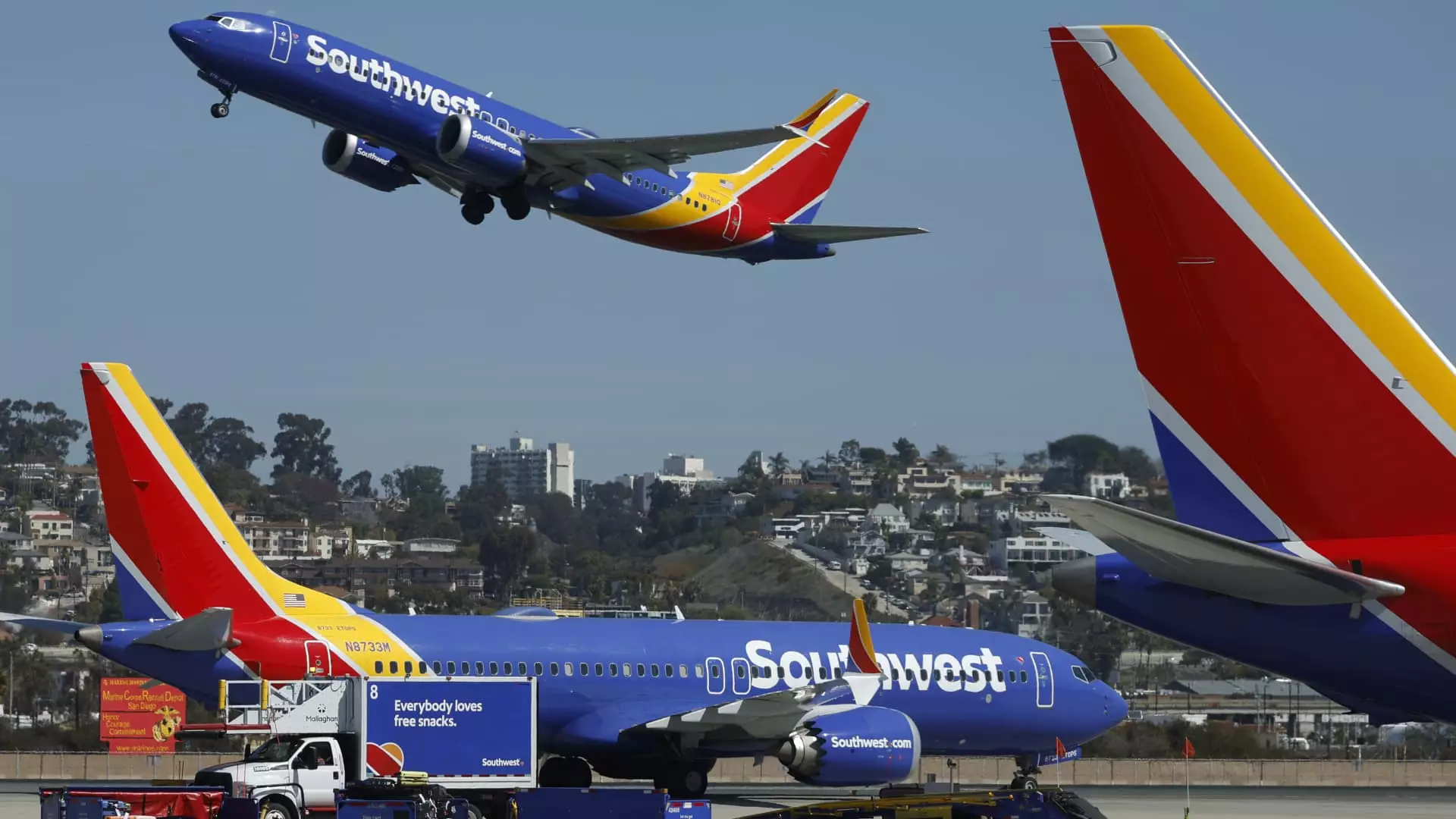In a bold declaration of intent, Southwest Airlines is reimagining its legacy as a low-cost carrier, stepping towards luxury services that many had deemed off-limits for the brand. CEO Bob Jordan’s recent comments reveal that there is no sacred cow as the airline attempts to attract a more affluent clientele. This transformation is not merely a corporate maneuver; it marks a significant pivot that challenges what Southwest has long embodied within the competitive airline sector.
Known historically for its low fares, free checked bags, and open seating, Southwest Airlines is in the midst of shedding aspects of its identity that once set it apart from competitors. These changes, initiated due to mounting pressure from rival airlines and a disappointing economic forecast, reflect a stark reality: the airline must evolve or face obsolescence. In this landscape, flexibility is key, as Jordan himself stated, “Whatever customers need in 2025, 2030, we won’t take any of that off the table.”
Setting the Stage for Premium Services
The mention of airport lounges, premium seating, and the possibility of long-haul flights to international destinations are signals that Southwest is not just responding to industry trends but is indeed laying the groundwork for a future where it can compete in higher market segments. While the airline has historically prided itself on providing an egalitarian flight experience, this evolution could alienate loyal customers who have embraced Southwest for its accessible pricing and straightforward service.
Jordan’s acknowledgment of customer preferences—particularly in high-demand markets like Nashville, where travelers seek out luxury options—highlights an imperative to reassess value propositions. Customers want more than just the basics; they crave the comfort and luxury typically associated with competing airlines. In a moment where consumers are willing to shift their loyalty in pursuit of elevated services, it appears Southwest recognizes its slip from consumer favoritism and brotherly affection.
A Response to Industry Pressures
The urgency to adapt stems not just from a changing consumer landscape but a volatile economic environment that has seen U.S. airfare prices trending downward. Southwest’s retreat from its profit forecasts for 2025 signals a realization of the complex, multifaceted challenges it faces. This is particularly unsettling as companies like Delta and American Airlines have already set the bar for premium experiences. The introduction of no-frills tickets and bag fees by Southwest is a precursor; however, it serves a dual purpose – assessing customer reactions while opening the door for a more lucrative segment.
But change doesn’t come without hesitation and self-reflection. Jordan’s reluctance to specify timelines for introducing lounges or international routes indicates that the company is navigating a tightrope. The fear of losing its identity as the “people’s airline” juxtaposed against the lucrative allure of premium services can create a perilous internal conflict. This position puts Southwest at a crossroads, where every decision could reshape its legacy.
Expanding Horizons: Long-Haul Flights and Partnerships
One significant focal point of discussion has been the prospect of acquiring longer-haul aircraft to facilitate international flights. The company’s reliance on the Boeing 737, a steadfast workhorse for over 50 years, has previously limited its ability to evolve. While Jordan is non-committal about such acquisitions, the mere prospect illustrates a willingness to contemplate transformation, albeit at a cautious pace.
Their partnerships with airlines like Icelandair for international routes hint at a strategic approach to building familiarity and experience in that realm. The roadmap toward European destinations, while still vague, could either impel loyalty or further fragment the airline’s customer base. Will those poised to take the leap to luxury travel enhance Southwest’s status, or will they simply seek solace elsewhere?
The future of Southwest Airlines hangs delicately in the balance as its leadership navigates these transformative changes. Consumers can only hope that the advancements do not come at the cost of the affordability and customer-friendly ethos that have defined the airline for decades. Although the world may demand innovation, it is the essence of Southwest’s “low-cost airline” identity that keeps its soaring spirit alive.


Leave a Reply